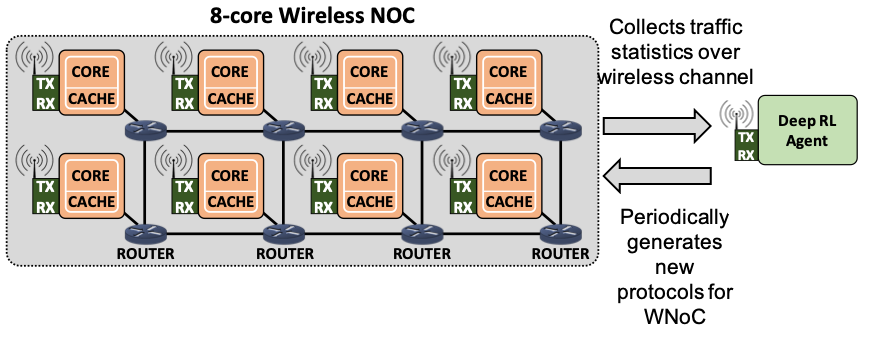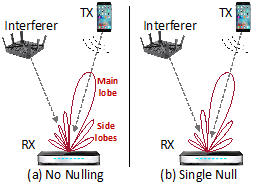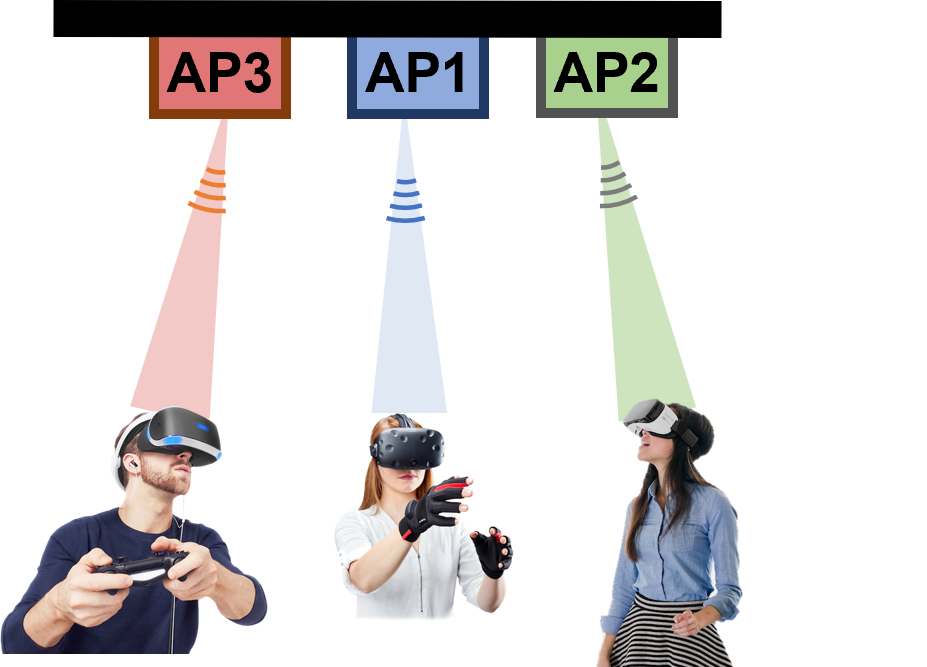Millimeter wave (mmWave) Networks form the central core of next-generation wireless networking including 5G and 6G cellular networks, 802.11 wireless LANs, and IoT networks. Millimeter wave, however, is fundamentally different from current wireless technologies in that it uses very narrow directional beams and operates at multi-Gbps data rates. As a result, mmWave systems face new challenges, in terms of mobility, medium access, and control overhead, which prevent them from scaling to mobile networks.
Our work addresses these problems by introducing protocols and algorithms that enable practical, agile, and mobile mmWave networks. First, we present Agile-Link, a sublinear time algorithm with provable guarantees for fast beam alignment and orders of magnitude improvement in establishing mmWave communication links in practice. Second, we extend the work to a network with many clients and APs to enable Many-to-Many beam alignment (BounceNet). We present a distributed protocol that allows a network of mmWave links to align their beams enabling extremely dense spatial reuse in millimeter wave networks where many links can communicate simultaneously at multi-Gbps without interfering to deliver practice to deliver 3.1x – 13.5x higher throughput in practice. Finally, instead of simply avoiding interference, in Nulli-Fi, we modify the beam pattern to suppress interference by creating nulls, i.e. directions in the beam pattern where almost no power is received. We present the first practical mmWave null steering system that uses a theoretically optimal algorithm that accounts for hardware limitations and imperfections to reduce interference by 100x and increase throughput by 2x.
Projects

One Protocol to Rule Them All: Deep Reinforcement Learning for Wireless Network-on-Chip [NSDI’21]
Wireless Network-on-Chip (NoC) has emerged as a promising solution to scale chip multi-core processors to hundreds and thousands of cores. The broadcast nature of a wireless network allows it to significantly reduce the latency and overhead of many-to-many multicast and broadcast communication on NoC processors. Unfortunately, the traffic patterns on wireless NoCs tend to be (…)

Practical Null Steering in Millimeter Wave Networks [NSDI’21]
Millimeter wave (mmWave) is playing a central role in pushing the performance and scalability of wireless networks by offering huge bandwidth and extremely high data rates. Millimeter wave radios use phased array technology to modify the antenna beam pattern and focus their power towards the transmitter or receiver. In this paper, we explore the practicality (…)

Many-to-Many Beam Alignment in Millimeter Wave Networks [NSDI’19]
Millimeter Wave (mmWave) networks can deliver multi-Gbpswireless links that use extremely narrow directional beams.This provides us with a new opportunity to exploit spatialreuse in order to scale network throughput. Exploiting suchspatial reuse, however, requires aligning the beams of allnodes in a network. Aligning the beams is a difficult process which is complicated by indoor multipath, (…)